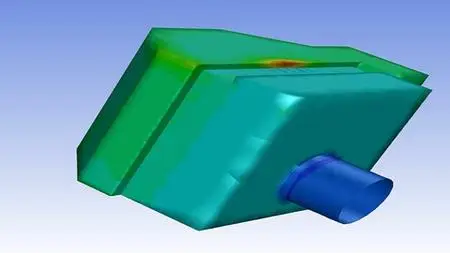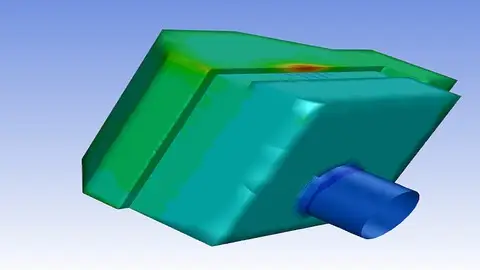Ansys Fluent = Learn how to use the Ansys Fluent effectively
MP4 | h264, 1280x720 | Lang: English | Audio: aac, 44100 Hz | 8h 36m | 4.85 GB
MP4 | h264, 1280x720 | Lang: English | Audio: aac, 44100 Hz | 8h 36m | 4.85 GB
Overview of the CFD Process, Setting Up Domain, Setting Up Physics, Post Processing, Solver, Parameter
What you'll learn
They will learn how to analyze and simulate the engineering models.
Requirements
Basic Engineering Knowledge with powerful computer
Student,who has engineering background, has a little bit knowledge about CFD
Description
This course is a perfect fusion of CFD theory and software exposure. This course explicitly focuses on solver and post-processing part oF typical CFD process using simulation tools Ansys Fluent. Each chapter has specific workshop for doing more practice.
Following topic will be covered in this course;
Chapter 1= Learning basic steps for CFD Analsys with Ansys Fluent, Launching Ansys Fluent, Fluent Graphic User Interface, using the Ribbons to guide the workflow of the Fluent session, showing the main tabs such as Setting Up domain, check mesh quality, display.Doing more practice with Workshop model section.
Chapter 2= Specifically focus the "Setting Up Physics" section such as how to define Material Properties, cell zone, boundary conditions, operating Condition and Solver type.Doing more practice with Workshop model section.
Chapter 3 = Learn how to use the ribbons in the Post-processing section and learn how to do quantitative and qualitative flow performance of the system with using both CFD Post and Fluent also learn how to create graphical objects such as mesh, contour, vector,pathlines, Composing and displaying scenes using scene objects, Alphanumeric post processing of fluxes and integral quantities Defining new variables using custom field functions and creating x-y plot , check the residuals in the Plot section and show how to use animation tools in the CFD Post and Fluent.Doing more practice with Workshop model section.
Chapter 4 = how to specify the solver and choose methods and controls, how to initialize the solutions, how to use the report definitions to monitor and judge converge and talk details in Solving Ribbon such as Method, Controls, residuals, initialization, Calculate section and converge criteria.Doing more practice with Workshop model section.
Chapter 5 = Defining Inlet/Outlet parameter, Parameter Management, working with design points, design point update,retain and initialization.Doing more practice with Workshop model section.
Who this course is for:
Engineers,Designers,Engineering Students(Undergrad,Master,PHD),Consultants



